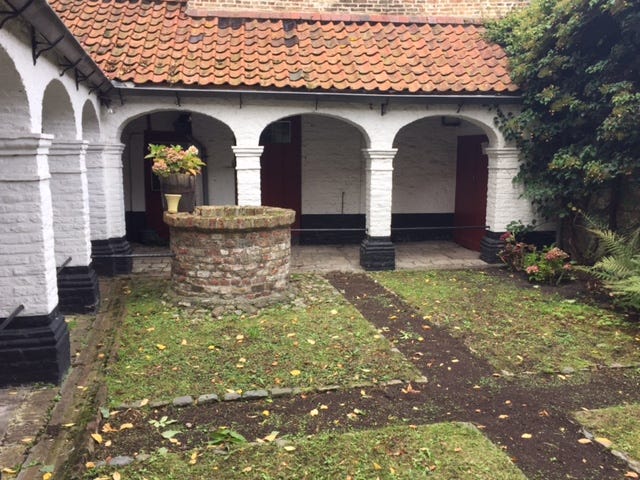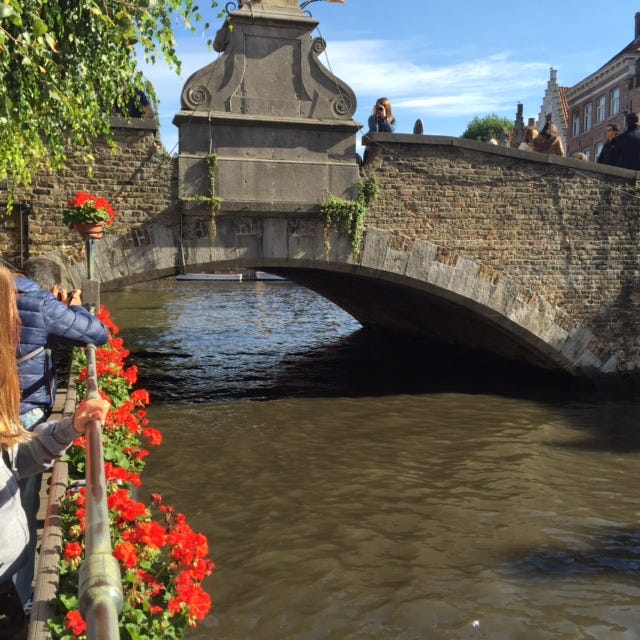There’s always a story from the past, a tale of ancestors whose names we may not know, but who nonetheless paved a way and paid a price for us.
This week I’ve been thinking about the long path from woman as chattel to woman as President of the United States. The effort of such a journey is not found in just one face, but in thousands. Joseph Campbell’s book, A Hero With A Thousand Faces recounts the different archetypes of heroes found in our mythologies and folk lore. The heroine’s journey is no less significant, though it took several decades for a woman to write a book to rival Campbells that would speak to the same archetypical unfolding. Maria Tatar penned The Heroine with 1,001 Faces in 2021, an anthology of feminine mythologies, and what infused those heroines with strength. Tatar’s book seems to have been written with the intention of recovering something lost to many of us.
The story that I want to share, however, is not mythological but factual. Nonetheless, it is filled with feminine archetypes. This story of heroines, who were called the Beguines, is a reminder of the women who came before us to lay the foundation upon which we now stand, unified in a belief that it’s time for a women to lead us; time for women to come together in solidarity; and time for rebalancing the masculine and feminine qualities needed in leadership and good governance.
The woman considered to be the first Beguine was Marie d’ Oignies. She had gone into the Leper colonies to care for the sick. Other women, inspired by her acts, followed and they began to live in small communities. The Vatican sent a young priest, Jacque d’ Vitry, to check up on these women. D’Vitry was so taken and inspired by the women’s sense of service that he reported back to Rome that the Beguines were pure and chaste women leading lives of devotion. Thus the Beguines were granted papal protection and allowed to thrive in their ministry of service.
Eight years ago I visited Brugge, Belgium to see if I could trace and imagine the footsteps of this group of women who thrived in the early part of the 13th Century. According to Laura Swan’s book, The Wisdom of the Beguines, The Forgotten Story of a Medieval Women’s Movement, the name came from the word beg, or begue in French. It means to mumble, stammer or not speak clearly. It was used as an insult and a mockery toward these women who cared for the less fortunate. Powerful medieval men saw them as uppity and hypocritical. Who did these women think they were living an independent life free of the directives of husbands or cleric?
The Beguines were not a formal organization or a religious order. They were lay women who didn’t follow a particular set of rules. As they grew in popularity with the public, their numbers increased. And though the life of a Beguine may have differed from place to place, they were always connected by the underlying principles of living simply and of being in service to the poor and those in need. This was the solid commonality of the Beguine ministry. The original mocking of “beg,” from which their name was born, was given respect by the commoners, changing the nickname into something positive.
Even though they ministered to the forgotten and marginalized of the society, they were not allowed by the church to preach the word of God. However, they were allowed to share visions, dreams, and to prophesize. As a result, the Beguines developed a very esoteric sense of evangelism. Additionally they wrote devotional poetry and sermons for those they cared for, writing in the vernacular of the day, so their words were accessible to many. The religious and/or devotional writings of the time were all in Latin, which meant that it was for an exclusive and aristocratic audience only.
The deeply esoteric spirituality of the Beguines was balanced by an uncanny knack for business. The women did manual labor to support their communities, building roads and repairing roofs. At a time where it seemed absolutely impossible, these women found both spiritual and financial independence.
When the pope who had granted them protection died, the Beguines were absorbed into the convents of Europe or they were burned at the stake for heresy. Regardless of their commitment to serve their communities in a selfless manner, the accusation and conviction of heresy was always nearby. Eventually the Beguines were returned to their role of second class citizen, and the memory of strong, confident and independent women became a long ago dream. Yet the movement continued on in small ways. The Beguines at their height influenced medieval art (especially the Christ and Madonna images); they were the precursor to Protestant reformation; and their physical, emotional and spiritual tenacity influenced, I believe, the likes of Teresa of Avila, Hildegard and others who sought to interpret Christianity as an action of love, mercy and social justice, rather than a religion of ritual, rule and domination.
The quest of women to be seen and treated as free and sovereign souls has old roots. Here’s a metaphor I like: oak trees root shallow, because their roots reach out to other trees. Through a vast network of sharing nutrition, water, and communication the oaks are a thriving community in service to one another.
We are living in an amazing historical time. When Kamala Harris became the democrat’s presidential nominee, she reminded me of the Beguines story. Her adult life has been one of service to try and make people’s lives better. She has a faith that traces back to Martin Luther King as well as Gandhi. And like Mary d’ Oignies, she inspires others to be a force for good in the world. I think the reason that so many women and men have rushed to her support is that she reminds all of us of our desire to be a force for good.
The striving to be seen and treated as a free and equal is as ancient as time. It is Creator-given, yet easily taken away by the arrogant domination of a few. When things get too out of balance, the divine feminine exerts herself to restore and redeem what has become lost. In this, do I place my hope.
The stories of our past inform the present and determine the potential of our future. The heroines who were the Beguines dared to answer the calling of their hearts and be in service to human kind. In the face of domination they rose up, not with the sword but with the empowerment of love. They stand behind us now, their hands on our shoulders, encouraging us to move forward. Maybe nothing is really ever lost . . .
P.S. To my modern day community of Beguine like women, who seek to be a force for good and uplift other women. Thank you
, , , , and apologies to anyone I’ve forgotten in this late hour that I’m putting this piece to bed. I’m blessed by all of you - named and un-named, to be in such an inspiring, creative community of crones and creatrix who challenge me to fly higher, go deeper and never stop learning.






Fascinating. And I, too, believe we are in a time ripe for a woman leader named Kamala. My bumper sticker: "I am woman. Watch me vote."
Ireland has a long tradition of 'uppity' women like the Beguines, including in Cork City, an amazing museum (and one of Cork's best cafes!), on the site of the convent founded by the innovator, rebel nun and educator of poor children, Nano Nagle. https://nanonagleplace.ie/the-story-of-nano-nagle/
I wondered if you were aware of the fabulous Substack too @15thcenturyfeminist which reminds us that not ALL of the women of history are/were 'anon' and, like your piece, that women have been resisting patriarchy in order to do good in the world for a very long time! Thank you for this lovely essay, broadening my mind and opening my heart today.